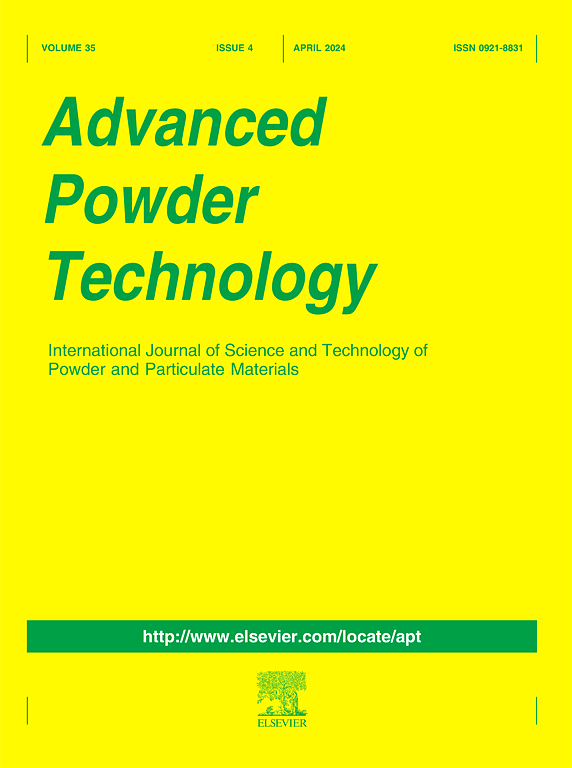Simultaneous recovery of acid-soluble potassium and silicon components from biomass combustion bottom ash using pulverization methods
IF 4.2
2区 工程技术
Q2 ENGINEERING, CHEMICAL
引用次数: 0
Abstract
The value of biomass combustion ash as a fertilizer can be improved when the potassium and silicon as major elements can be recovered simultaneously. To address this concern, the pulverization and classification is proposed in this study to improve the surface of ash particles to recover potassium and silicon elements simultaneously from woody biomass bottom ash. To this end, ash is ball milled using different ball sizes and pulverization times of 15–60 min, followed by sieving with 150 and 75 µm screen sizes. Pulverized ash obtained using smaller ball diameter produces finer ash particles with 14 % of higher yield in average, 18 % and 25 % higher levels of acid-soluble potassium and silicon, respectively at their maximum level, and 35 % higher of Newton’s efficiency in average compared to produced using a larger ball, indicating that the recovery of potassium and silicon simultaneously improved. A smaller ball separated finer particles containing potassium from the surface of larger particles containing silicon via surface grinding, as indicated by the higher difference in the median diameter of pulverized ash, resulting in ash particles that have a higher recovery of acid-soluble potassium and silicon components.

用粉碎法从生物质燃烧底灰中同时回收酸溶性钾和硅组分
当能同时回收以钾和硅为主要元素的生物质燃烧灰分时,可以提高其作为肥料的价值。为了解决这一问题,本研究提出了粉碎分级的方法,以改善木质生物质底灰的颗粒表面,同时回收钾元素和硅元素。为此,采用不同球粒度的球磨灰,粉碎时间为15-60 min,然后用150µm和75µm筛分。使用较小球径制得的灰粉颗粒更细,产率平均提高14%,最大酸溶钾和硅含量分别提高18%和25%,牛顿效率平均提高35%,表明钾和硅的回收率同时提高。一个更小的球通过表面研磨将含钾的细颗粒从含硅的大颗粒表面分离出来,由此可见,粉碎后灰的中位直径差更大,从而使灰颗粒具有更高的酸溶性钾和硅组分的回收率。
本文章由计算机程序翻译,如有差异,请以英文原文为准。
求助全文
约1分钟内获得全文
求助全文
来源期刊

Advanced Powder Technology
工程技术-工程:化工
CiteScore
9.50
自引率
7.70%
发文量
424
审稿时长
55 days
期刊介绍:
The aim of Advanced Powder Technology is to meet the demand for an international journal that integrates all aspects of science and technology research on powder and particulate materials. The journal fulfills this purpose by publishing original research papers, rapid communications, reviews, and translated articles by prominent researchers worldwide.
The editorial work of Advanced Powder Technology, which was founded as the International Journal of the Society of Powder Technology, Japan, is now shared by distinguished board members, who operate in a unique framework designed to respond to the increasing global demand for articles on not only powder and particles, but also on various materials produced from them.
Advanced Powder Technology covers various areas, but a discussion of powder and particles is required in articles. Topics include: Production of powder and particulate materials in gases and liquids(nanoparticles, fine ceramics, pharmaceuticals, novel functional materials, etc.); Aerosol and colloidal processing; Powder and particle characterization; Dynamics and phenomena; Calculation and simulation (CFD, DEM, Monte Carlo method, population balance, etc.); Measurement and control of powder processes; Particle modification; Comminution; Powder handling and operations (storage, transport, granulation, separation, fluidization, etc.)
 求助内容:
求助内容: 应助结果提醒方式:
应助结果提醒方式:


